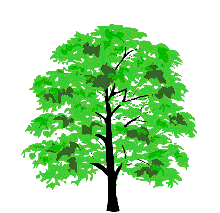 |
Forest Flora
of Hyderabad State - by M Sharfuddin Khan
|
| Main_Menu | Back to Family |
|
Botanical Name - Sesbania aegyptiaca ----- S. aegyptiaca, Pers.; F.B.I. II-114. Brandi's Ind. Trees, 219. Gamble's Ind. Timbers, 235. Vern. Suiminta, Nalla-suiminta, Rava-sing, Tel. Seuri, Jainti, Sirimonta, Mar. ----- A short-lived soft-wooded shrub, 10-15 ft. high. Laeves paripinnate, 3-6 in. long. Leaflets 9-20 pairs, 1/2 - 1 in. long, linear-oblong, minutely petioluled, membranous, glabrous, pale-green. Racemes 3-6 in. long, axillary, few-flowered. Flowers pale-yellow, petals often with purple spots, 1/2 - 3/4 in. Pod 6-9 in. long, cylindrical with contractions at intervals, flexible, twisted, 20-30-seeded, divided by partitions. ----- Not found wild, cultivated everywhere for its quick growth. The poles are used in thatching and the bark yields a good fibre for cordage. It is also grown as a support for the betel-pepper vine. Its wood is said to make the best charcoal for gun-powder. As supports to sugar-cane cultivation (local variety), The Sesbania should be planted in equidistant rows at the same time as the sugarcane offsets are put out, and allowed to grow up with it. Thus each pole would from a rigid support for half a dozen or so canes growing around it; and from its wonderfully quick growth, it would be possible to renew the planting of the supports every time a fresh crop of sugarcane is raised. Flowers at the end of the monsoons and Fruit during the cold season.
|